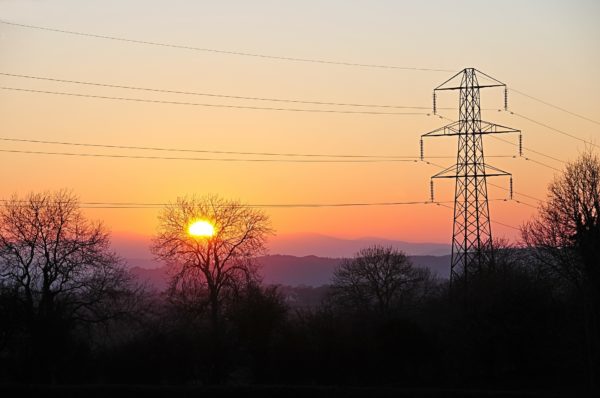Concurrent to the net energy metering (NEM) proceeding being held by the California Public Utilities Commission, a bill has been introduced to the state assembly that would amend the credits that legacy, current, and future solar customers receive for their systems. The bill’s approach has many across the industry describing it as shocking and dangerous.
The legislation, Assembly Bill 1139, was written by Assemblywoman Lorena Gonzalez, chair of the Assembly’s Appropriations Committee.
The bill includes a laundry list of initiatives that would devalue rooftop solar and distributed energy resources; eliminate 20-year legacy credit rates for NEM 1.0 and 2.0 customers, including schools and farms, which would threaten project economics and payback periods; and introduce a new “grid access” monthly charge that would add $50-$86/month for the typical residential solar user.
“Proposals that roll back NEM really, in turn, roll back the bill savings opportunities for customers who need them the most,” Suzanne Leta, head of policy and strategy as SunPower, told pv magazine USA.

The amount by which NEM and other distributed energy policies have expanded access and reduce utility bill costs for low- to middle-income Californians cannot be understated. According to Leta, half of all new residential rooftop solar customers in California are in low- and middle-income areas.
Devaluing and undercutting residential solar is also an issue that threatens grid stability in a state known for disruptions and outages.
Consumer protection issues
“The fact that this bill is even being proposed in the California State Legislature is shocking,” said Leta. “There are serious consumer protection issues with the bill, given that it makes changes retroactively on the million-plus rooftop solar customers in the state.”
Previous changes to the state’s NEM have been made prospectively by state regulators, meaning that new customers adhere to the new rules and rates, while existing customers remain with the 20-year rates they had when they first installed their system. That means there is almost no precedent for changing NEM architecture for existing customers because of the risk that doing so can derail the economics of their installation, some of which have been in place for years.
AB 1139 and contains provisions relating to higher-level state energy policy. As it currently stands, any CPUC proceeding or decision regarding NEM must take into consideration the sustainable growth of solar and distributed energy resources, as well as ensuring that any changes to policy or incentives are gradual. AB 1139 would eliminate those provisions.

Image: Pixabay
Utilities are also currently required to account for the grid savings benefits of distributed energy resources when they do their investment planning. AB 1139 would eliminate that provision, too.
Monthly fees
The bill also would require the CPUC to make its own decision regarding a NEM successor tariff by February 2022. If this is not accomplished, the bill then would require the CPUC to institute the following measures:
- For all new net metering customers, the credit value on their bill would fall to the wholesale rate, which is roughly 3 cents per kWh, whereas the average credit rate currently is in the range of 20+ cents per kWh
- A fixed monthly fee of $70-90 would be applied to new and existing customers, once those customers have had their system in place for at least years.
Ripple effect?
The potential ramifications of AB 1139 extend beyond California. For years, states with nascent solar energy markets looked to California as a model for energy policy and incentive programs. As other states matured, the California models were applied to other aspects of clean energy like energy efficiency measures and electric vehicles.
So, if the state that historically has been used as a model abandons one of the most critical elements of the clean energy transition, the move may give immediate precedent to any state or utility looking to gut rooftop solar’s growth.
More than 100 organizations across California and the country have expressed opposition to the proposed measure. Opponents include the California Solar and Storage Association (CALSSA), Solar Energy Industries Association, Advanced Energy Economy, Earth Justice, Vote Solar, Environment California, Sierra Club, and the Solar Rights Alliance.
In addition, roughly 22,000 people have emailed their Assembly member asking them to vote against AB 1139. An additional 2,300 have called their Assembly member asking for a no vote, according to data provided by SunPower, the Solar Rights Alliance, and CALSSA.
This content is protected by copyright and may not be reused. If you want to cooperate with us and would like to reuse some of our content, please contact: editors@pv-magazine.com.









And this is in the CA legislature why???
I live in California and have both an on-grid Tesla Roof and an off grid RV type solar system running my 120 volt lighting and small appliances. I built the off grid system, in my back yard, first so I could disconnect PG&E and still run my house in a power failure. This is why Tesla now only installs it’s new solar roof with a transfer switch and back up inverter and battery(s) ( Power Walls). When PG&E starts charging $70 to $90 per month connection fees, we will just pull the meter and not pay. We will just use the extra electricity for hot water, electric heat or air conditioning once the batteries are topped off eliminating the PG&E pricy natural gas. I also installed a transfer switch to a gasoline generator so I would never be without power for long if everything else fails.
I am in a position that I can disconnect as well (lots of PV and batteries) , but during the summer months when I overproduce 50%, I would rather send that into the grid to share my clean energy with others than to just burn it off.
to Matt Blank;
Everyone, on the grid, pays 31 cents a day to PG&E to be connected but you only get paid for solar if you sign the NEM2 agreement and have an approved system. If you keep PG&E as a “Back Up System” and have to buy their Natural Gas anyway, you could keep your meter connected but turn off your main disconnect and feed your home through your own transfer switch just like with the back up generator, from a pure sine wave inverter and isolation transformer to maintain proper grounding on the house side.. The president of Tesla cyber truck division installed a Tesla Solar Glass roof and 4 power walls and when PG&E balked at his system as “not being approved”, they would not install a meter for him and he is running off grid on his 3,800 square foot house. In fact, this is why Tesla NOW will only install the Tesla Solar Glass Roof roof directly to the batteries and transfer switch and the customer can decide to connect to PG&E or not. (TESLA vs PG&E)
to Gene Rubin;
I also like the BIG credits i get off my Solar Roof in the Summer, but, after October 15th,every year, the sun goes behind 3 – 80 foot tall “City Trees” to my south and only my “off grid” system in my “back yard” gets sunlight until those trees lose their leaves in January and my roof gets 40% power until March 15th when the sun is high enough in the sky to allow my roof to produce full power again. With a total of 7,800 solar roof watts going on grid and 8,400 watts of off grid solar that goes to 8,000 amp hours of lead acid batteries, my 16,000 watts should power me year around unless we get those smoky days that blot out all the sunlight and turned day into night. I will see this year. Anything that does not go back on the grid or into my batteries, goes to Air conditioning, electric heat or just conditions the lead acid batteries to a “top-off” that is recommended to do at least once a month according to the MPPT Charge controllers recommendation.
Title 24 currently prevents customers from disconnecting their homes from the grid. You will end up paying the customer charge regardless.
So, don’t pay. What will they do? Shut off your power?
To William Reading
Since your bill is a combined energy bill, not paying it would shut down both your electricity and your natural gas with PG&E. The $10.00 per month electrical connection charge is cheap for backup power availability for grid attachment and 25,000 watts of power when you need it on a 100 amp 250 volt service.